The upcoming election is crucial for everyone, especially those who...
Read More
WORLD BULLYING PREVENTION MONTH: Cyberbullying
According to a survey conducted by Morning Consult, there has been a notable shift in the amount of time young people are spending on electronic devices since the COVID-19 pandemic began. While 40% of parents reported their children spent at least four hours per day on a device before March 2020, that percentage has jumped to 70% as of August 2020.
Perhaps this is not surprising; with school closures and quarantines, youth spent more time online playing games, completing school assignments, watching entertainment platforms, and interacting via social media. As youth spend more time on screens, they may find themselves at an increased risk of being cyberbullied.
As National Bullying Prevention Month continues, it is essential we recognize and educate on all forms of bullying. This includes cyberbullying, which is bullying that takes place over digital devices. Dosomething.org reports approximately 37% of young people between the ages of 12 and 17 have been bullied online, and 30% have had it happen more than once.
Examples of cyberbullying include:
- Gossiping or spreading rumors on social media
- Encouraging self-harm
- Sharing embarrassing content, including revenge-porn
- Using harassing language aimed at race, religion, ethnicity, and other personal characteristics
- Impersonation or creating mean or hurtful pages about a victim
- Exacting revenge in an effort to threaten or destroy an individual’s privacy by sharing their personal information, including their address, phone number, credit card information, and social media accounts
While traditional bullying and cyberbullying are similar expressions of aggression, there are key differences that can make cyberbullying harder to combat. For example, cyberbullying may conceal the bully’s identity, which can be difficult to uncover. Also, cyberbullying has the potential to go viral. This often happens when people find the content funny and share it across their social media networks.
While it can be difficult to fully track a child’s online activities and conversations, monitoring their social media presence, saved apps, and browsing history may uncover any red flags. Additionally, knowing a child’s user names and passwords for email and social media platforms can help a parent or concerned adult stay informed of a child’s online behavior.
For more information about cyberbullying, including prevention, signs and steps to take to support someone who is being cyberbullied, visit cyberbullying.org.
In addition, if you or someone you know is affected by cyberbullying in any way, the National Runaway Safeline is here to help. NRS provides non-directive, non-judgmental support to every individual. Call or chat anytime, 24/7, and we’ll listen to your story, help you develop a plan and connect you to free local resources. You are not alone.
Ballot Checker – Youth Hope Month
This tool is powered by Vote.org, a nonpartisan 501 non-profit organization...
Read MoreRegister to Vote in the November 2024 Election – Youth HOPE Month
This tool is powered by Vote.org, a nonpartisan 501 non-profit organization...
Read MoreCheck Voter Registration Status – Youth HOPE Month
This tool is powered by Vote.org, a nonpartisan 501 non-profit organization...
Read More

